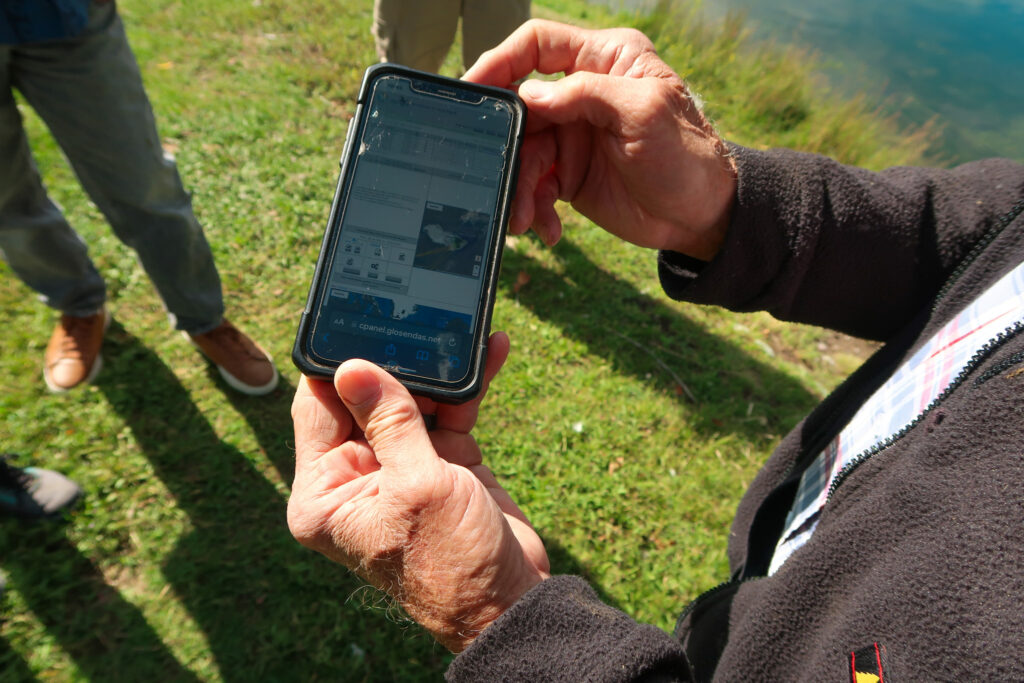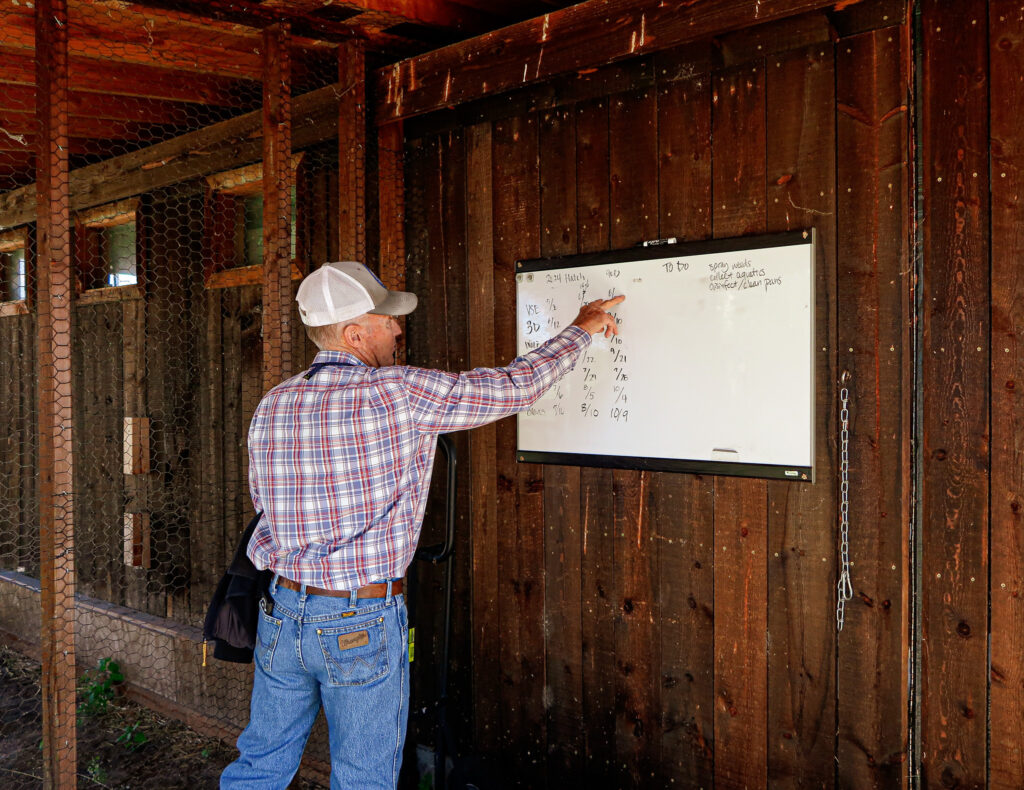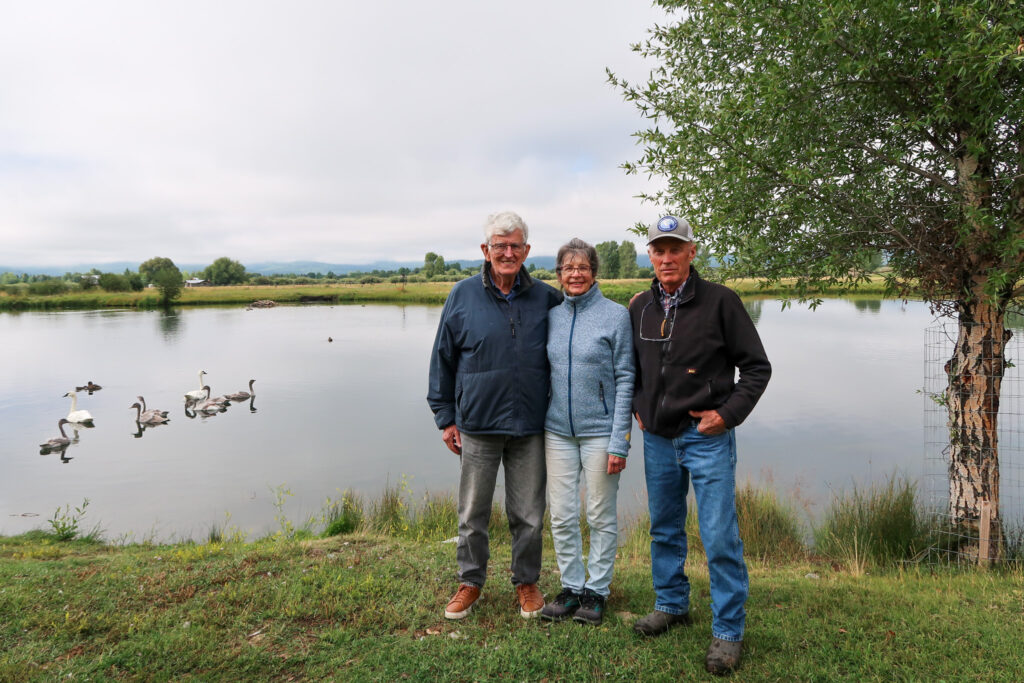This story was part of our newest episode of “Jackson Unpacked”, our station podcast that dives deeper into local stories. You can listen and follow here, or wherever you get your podcasts.
If you’re in the heart of the Greater Yellowstone Ecosystem, and happen upon a secluded, shallow pond untouched by human activity and teeming with aquatic plants — you might just spot a pair of quietly nesting Trumpeter swans.
But, that hasn’t always been the case. These birds were once thought extinct in the continental United States after being over hunted and faced with severe habitat loss. By the turn of the 20th century, the cherished waterfowl hit all-time lows.

After releasing young cygnets in the wild, Bill Long tracks the swans’ location to see how they are doing. He says a young brood often stays together for several months before parting ways. (Jenna McMurtry / KHOL)
At least, until a flock of swans was found in the innermost reaches of Yellowstone National Park in 1932, surprising even the keenest of birdwatchers. At the time of their discovery, they were thought to be the last remaining swans in the lower 48.
David Haines, a bird biologist for the park, said it was partially Yellowstone’s remoteness that saved the species.
“Like bison, Yellowstone isn’t the greatest place for swans, but it was the last place they could be without being hunted out,” Haines said.
Despite making a comeback from the brink of extinction, swans still hit near-record lows as recent as the last two decades. From a high of 80 individuals in Yellowstone, he said there were just four swans left in the park in 2010.
Haines said there’s not just one thing that has caused the bird’s decline and struggles here. However, several contributing factors include human disturbance, disease or climate change. That’s on top of the already stiff competition to survive in a competitive wetland ecosystem.
Though the trumpeter swans’ story from near extinction to near recovery has been marked by dramatic ups and downs, it has always had ties to Jackson and the Greater Yellowstone Ecosystem.
That is, in part, because of Bill Long. A former Game & Fish warden, he’s best known these days as the founder of Wyoming Wetlands Society, a Jackson-based nonprofit leading the state’s first captive breeding program.
Since founding the nonprofit in 1986, Long has helped raise and release upwards of 800 cygnets around the tri-state region. As of this year, Long said the nonprofit is approaching a hundred swans released in Yellowstone.
Organizing a release takes a lot of coordination, particularly between Wyoming Game & Fish, both Yellowstone and Grand Teton National Parks and the Pacific Flyway Council to determine where to release the young cygnets.
Susan Patla, a retired nongame biologist, helped spearhead much of the efforts on behalf of Game and Fish, including a successful restoration effort in the Upper Green River area. Despite being out of the field for a few years now, she is still considered one of Game & Fish’s swan experts and now gets to enjoy the benefits of her work.

Bill Long points to a chart listing potential release dates for each of the nesting swans’ cygnets under Wyoming Wetland Society’s care. (Jenna McMurtry / KHOL)
“When I first moved here in 1987, there were no swans in Swan Valley. Now, a bunch winter there and down at American Falls Reservoir,” Patla said.
Most recently, the Wyoming Wetlands Society released five yearlings near Big Sandy in the Wind River range in July. Another round of releases is in the works for next month.
Those with backyard ponds can also help be a part of the recovery effort. They just have to open up their homes to a pair of nesting swans.
That’s what longtime locals Barbara and John Simms did — and you might be familiar with the name. John Simms is the founder of the popular and aptly named fishing brand SIMMS.
While retirement slowed life down a bit for the couple, it didn’t make it any less quiet.
“That’s the highlight of the noise in our neighborhood. That’s a pretty high-quality, high-grade problem to have if your most annoying noise is a trumpeter swan, right?” Barbara said about cohabitating with a family of swans.
John has also enjoyed the extra company.
“We don’t find it annoying. We love it,” John said. “Once the eggs hatch and the cygnets are on the pond, it’s just an incredible experience watching them following the adults around the pond. It’s a real heartwarming experience. And we just treasure it.”
The couple’s pond has fledged over a hundred swans since they first became involved with Wyoming Wetlands Society three decades ago. And it all started with a phone call from Long over thirty years ago, who sought them out upon hearing they had a pond that could suit swans.
Hosting the swans doesn’t require much, other than fencing the pond and making a commitment to avoid interaction so they can adjust to life in the wild.
Sometimes, though, things don’t go as planned.
On more than one occasion, the swans have taken advantage of high snowfall to hop over the fence at the Simms’ pond and meander to neighboring ponds. The hardest part is rounding them back up. More than once, the recovery effort has involved swan chases by way of cross-country skis.

To this day, John and Barbara Simms aren’t sure who gave their contact to Bill Long at the Wyoming Wetland Society. But they are grateful for that phone call, since it resulted in their pond becoming a home to nesting swans for the last three decades. (Jenna McMurtry / KHOL)
“We’ve had a couple of adventures. But, for the most part, it’s been very hands off and we just have the pleasure and the delight of watching the little ones come in the early summer before being released into the wild. It’s a great full circle,” Barbara said.
Given the important role wetlands play in the larger ecosystem, Long said it’s not surprising swans are consistently ranked as one of the high-priority species to protect. A loss of the birds can also indicate the quality of a wetland, which often is the bedrock of the wider ecosystem wherever they exist.
Ultimately, though, Long said his conservation efforts go beyond stabilizing the swan population.
By getting people to rally behind swan restoration, they are de facto supporting wetlands conservation.
This is especially important for several reasons in Wyoming, one being the prevalence of wetlands across the state.
“Seventy-five percent of the species in Wyoming are using riparian habitat in a dry environment like the majority of this country. Wetlands and riparian corridors are a significantly important portion of that habitat type,” Long said.






